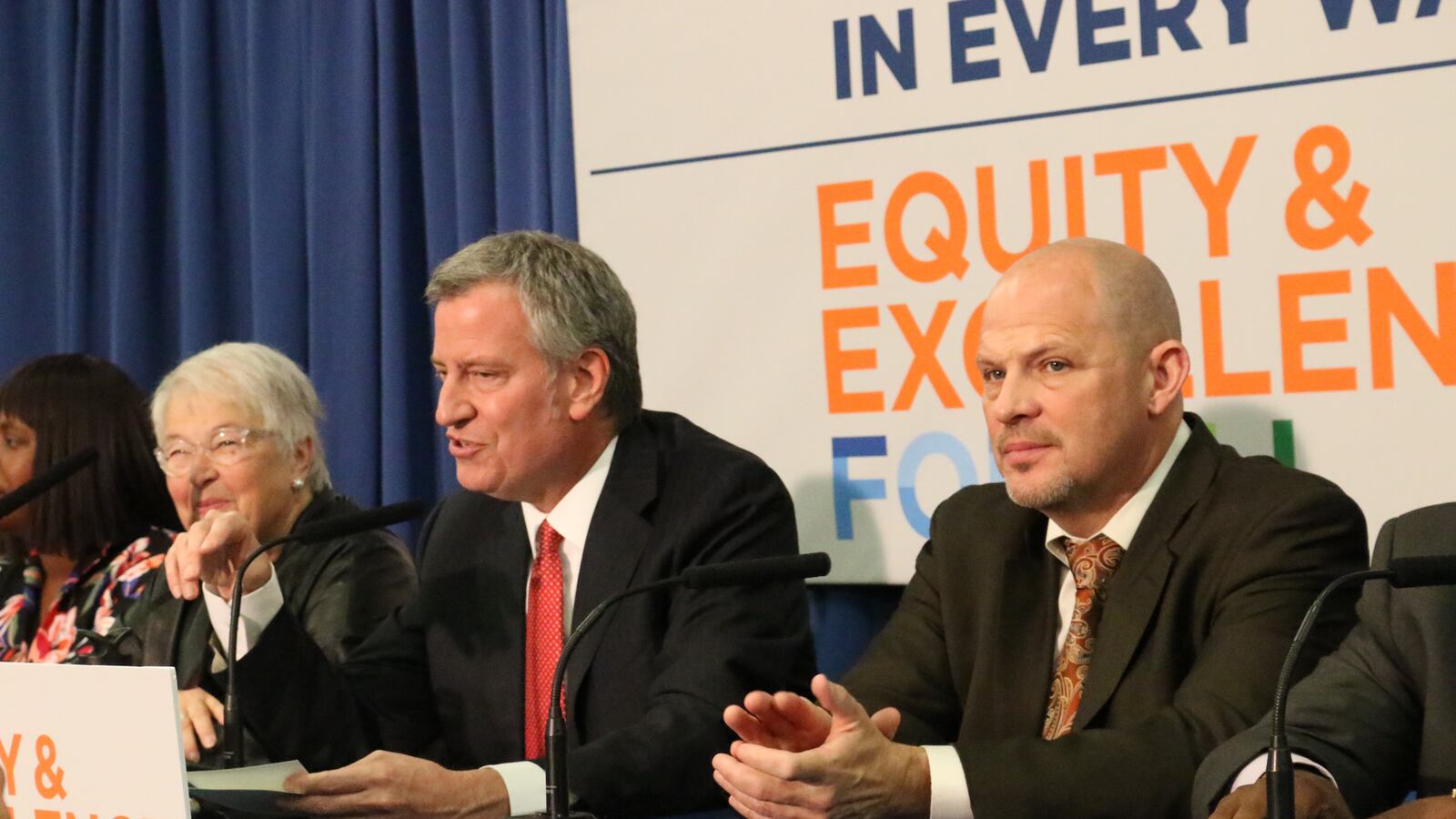New York City is significantly expanding a program that infuses high-need schools with extra resources, including partnerships with social service providers, city officials announced Thursday.
Starting this September, 69 additional schools will officially enter the city’s “community schools” program, which is designed to help under-resourced schools address the physical health and emotional issues that can impede student learning.
The expansion brings the total number of community schools to 215, serving just over 100,000 students, making New York City’s program the largest in the nation, officials said.
“This is a model that is a game-changer,” Mayor Bill de Blasio, flanked by top union leaders, said during a press conference at Brooklyn’s I.S. 155, one of the schools that will be added to the program. “New York City is starting to be the national leader because we’re going farther and faster than any school system.”
Every community school uses a slightly different combination of resources, but they all create an hour of extra learning time, conduct outreach to families to boost attendance, and receive an extra staff member to help coordinate the program.
The schools also all partner with nonprofit organizations that offer a range of services, such as mental health counseling, vision screenings, or dental checkups. The latest expansion will cost $25.5 million per year, and will be financed by federal dollars distributed by the state through grants.
The approach, favored by the city’s teachers and principals unions, involves flooding schools with additional resources instead of closing them (the preferred strategy of de Blasio predecessor Michael Bloomberg).
But it’s unclear whether de Blasio’s big bet on community schools — which launched more than two years ago — is likely to pay off and how the city plans to measure its success.
Chris Caruso, who runs the community schools program, pointed out that chronic absenteeism has fallen an average of 7.2 percent across all community schools over the past two years, and graduation rates have increased 4.8 percent. But he stressed that the program is “not a school turnaround strategy.”
In the city’s lowest-performing “Renewal” schools, which are also part of the community schools program, and which de Blasio claimed would see “fast and intense” improvements, the results have been mixed — even according to the city’s own benchmarks.
Caruso noted a wider study is in the works: The city is working with the Rand Corporation to evaluate how effectively the community schools program has been rolled out. That study is scheduled to be released this fall. However, a more comprehensive look at whether the program is leading to better student outcomes isn’t expected for at least a year after that, Caruso said.
One of the mayor’s fiercest critics, the pro-charter group Families for Excellent Schools, immediately criticized the program’s expansion.
“Thanks to Mayor de Blasio and his friends at the [United Federation of Teachers], there are now roughly an equal number of students in community schools as there are in public charter schools,” the organization’s CEO, Jeremiah Kittredge, wrote in a statement immediately after the city’s announcement. “But the results for kids couldn’t be further apart — public charter students are twice as likely to read and do math on grade level.”
You can find a full list of the city’s new community schools here.

